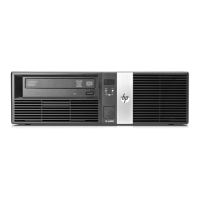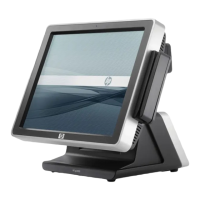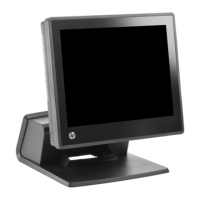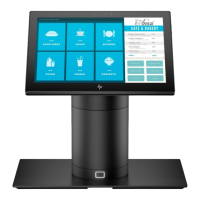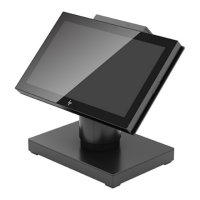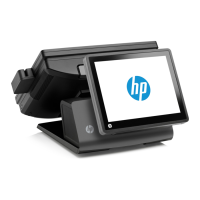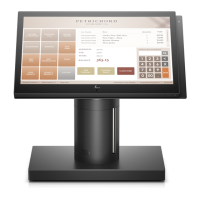Configuring
the
Terminal
Table 2-2.
Terminal
Configuration
Menu
Fields
(Continued)
~--~--------------~(
PrinterCode4
Device code
"4"
is ordinarily used only
for
selecting an external printer.
Through
the use
of
this
(Cont'd) configuration parameter, however, you can redirect
the
device
control
operations
to
the
integral
printer
without
altering the host
computer
program.
PrinterNull5
LocalEcho
Cap~
Lock
Values:
EXT
(external printer)
INT (integral printer)
Default:
EXT
This field specifies the
number
of
ASCII null codes (0-255)
to
be transmitted
to
an external
printer
after
each ASCII
control
code.
Value:
0-255
Default: 0
This field is the
functional
equivalent of the HALF/FULL DUPLEX
toggle
switch
on an
HP
2645
terminal.
ON
= Characters entered
through
the keyboard are
both
displayed on the screen and transmitted
to
the host computer.
OFF
= Characters entered
through
the keyboard are transmitted
to
the
host
computer
only (if they
are
to
appear on the screen, the host
computer
must
"echo"
them
back
to
the terminal).
Default:
OFF
This field is the
functional
equivalent of the CAPS LOCK latching key on an HP 2645 terminal.
ON
= The terminal generates only Teletype-compatible codes: uppercase ASCII (00-5F, hex)
and
DEL
(7F,
hex). Unshifted alphabetic keys (a-z) generate the codes
for
their
uppercase equiva- (
lents, the
{,
I,
and}
keys generate the codes
for
[,
\,
and I (respectively). The keys
for
gen-
erating -
and'
are disabled.
Start
Col
ASCI18B1ts
Xm!tFnctn(A)
2-4
OFF
= The terminal generates the full 128-character ASCII set of codes.
Default:
OFF
If
the line in which you are entering data is the
bottommost
used line in display memory (there are
no printing
or
non-printing characters
following
the
current
line in display memory),
the
terminal
automatically
generates a logical start-of-text
pointer
to
designate the leftmost character that you
enter in the
line. This
pointer
remains
with
the line in display memory
until
the
line is deleted.
When you are operating in MODIFY LINE
or
MODIFYALL mode and you press
II
or
II1II,
the data
transmission from the
terminal normally begins at the logical start-of-text
pointer
in
the
particular
line.
If
the line has no logical start-of-text pointer, however, the data transmission begins at
the
designated
start
column.
This designated
start
column
can be defined and saved in non-volatile
memory using
the
Shrteol
field of the terminal
configuration
menu. The active value
of
this field
can also be
temporarily
redefined using one
of
the
"marg!
n!5/tab!5/col"
function
keys.
Value:
1-80
Default: 1
When this operating mode is enabled (-YES), the terminal transmits 8-bit ASCII codes in which
the
eighth (high-order) bit, when set
(=
1), indicates
that
the character is from the alternate
character
set. This is a Hewlett-Packard convention and you will ordinarily use
it
only
when communicating
with an
HP
300
Computer
System
or
in
conjunction
with
certain
HP
line printers (such as the HP
2635A/B Printing
Terminal).
Values:
YES
= 8-bit codes.
NO
= Standard 7-bit codes.
Default:
NO
This field is the
functional
equivalent of keyboard interface strap A on
an
HP
2645 terminal.
(
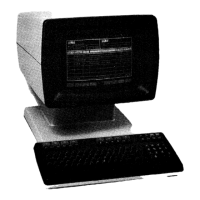
